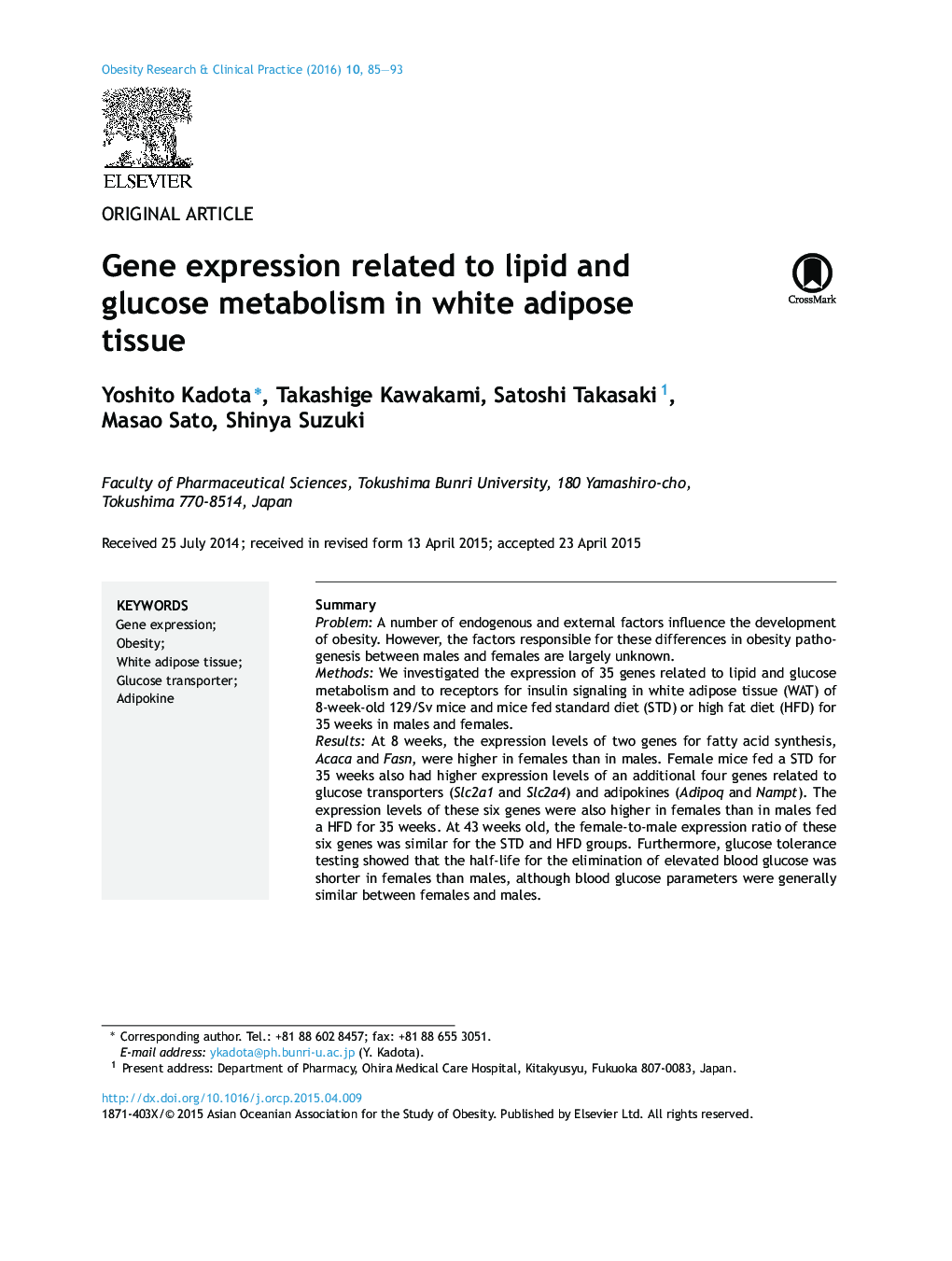| کد مقاله | کد نشریه | سال انتشار | مقاله انگلیسی | نسخه تمام متن |
|---|---|---|---|---|
| 3003671 | 1180816 | 2016 | 9 صفحه PDF | دانلود رایگان |
SummaryProblemA number of endogenous and external factors influence the development of obesity. However, the factors responsible for these differences in obesity pathogenesis between males and females are largely unknown.MethodsWe investigated the expression of 35 genes related to lipid and glucose metabolism and to receptors for insulin signaling in white adipose tissue (WAT) of 8-week-old 129/Sv mice and mice fed standard diet (STD) or high fat diet (HFD) for 35 weeks in males and females.ResultsAt 8 weeks, the expression levels of two genes for fatty acid synthesis, Acaca and Fasn, were higher in females than in males. Female mice fed a STD for 35 weeks also had higher expression levels of an additional four genes related to glucose transporters (Slc2a1 and Slc2a4) and adipokines (Adipoq and Nampt). The expression levels of these six genes were also higher in females than in males fed a HFD for 35 weeks. At 43 weeks old, the female-to-male expression ratio of these six genes was similar for the STD and HFD groups. Furthermore, glucose tolerance testing showed that the half-life for the elimination of elevated blood glucose was shorter in females than males, although blood glucose parameters were generally similar between females and males.ConclusionsThese findings suggest that sex and aging may cause diet-independent differences in gene expression levels in female and male mice, and that higher expression of these genes in females could contribute to higher metabolic activity and resistance to obesity compared with males.
Journal: Obesity Research & Clinical Practice - Volume 10, Issue 1, January–February 2016, Pages 85–93
